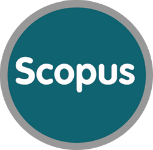Novel Cybersecurity Framework for AI-Driven Drone Integration by Critical SMEs in Economically Distressed U.S. Rural Communities: Advancing Secure Precision Operations in High-Risk Environments
Keywords:
AI-Driven Cybersecurity, Trust-by-Design Framework, Industry 5.0 Security, Human–AI Collaboration, NIST Cybersecurity Framework, Ethical Artificial IntelligenceAbstract
As industrial ecosystems evolve from Industry 4.0 to the human-centric paradigm of Industry 5.0, integrating ethical artificial intelligence (AI), resilience, and cybersecurity has become vital. Industry 5.0 emphasizes not only automation but also sustainability, trust, and human-machine collaboration. These environments, particularly those utilizing AI for decision-making and threat management, pose complex cybersecurity and ethical challenges.
This article proposes a novel “Trust-by-Design” cybersecurity framework tailored for Industry 5.0 settings. Grounded in the NIST Cybersecurity Framework (Identify, Protect, Detect, Respond, Recover), it integrates AI into each domain to enhance resilience and operational transparency. A systematic literature review (SLR) of 2,395 publications—narrowed to 236 peer-reviewed sources—guides the framework’s development. AI use cases are mapped across cybersecurity functions, including intrusion detection, behavioral analysis, access control, blockchain-based audits, and automated recovery.
Additionally, the framework applies an AI capability taxonomy (perception, learning, reasoning, communication, planning) to align technical roles with trust-enabling mechanisms. Key gaps in empirical validation are noted, emphasizing the need for real-world pilot testing in high-risk sectors like smart manufacturing and healthcare.
To facilitate adoption, the paper outlines a modular deployment strategy involving stakeholder engagement, regulatory alignment, and ethical compliance. The resulting model offers a scalable, interdisciplinary approach for integrating secure and trustworthy AI into Industry 5.0 operations, supporting researchers, policymakers, and cybersecurity professionals alike.
Downloads
Published
How to Cite
Issue
Section
License
Copyright (c) 2025 Well Testing Journal

This work is licensed under a Creative Commons Attribution-NonCommercial 4.0 International License.
This license requires that re-users give credit to the creator. It allows re-users to distribute, remix, adapt, and build upon the material in any medium or format, for noncommercial purposes only.

